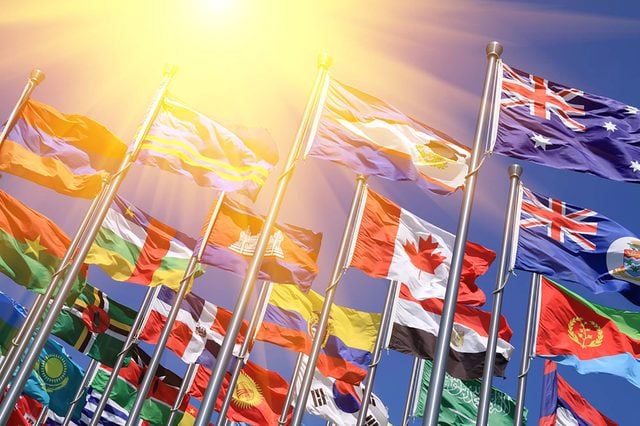The One Color You Will Almost Never Find on National Flags
Updated: Jul. 19, 2021
There are 196 sovereign nations in the world, and, in turn, 196 national flags. But this one color is rarely seen on any of them.
 Purple is a color of regality. In 16th century England, Queen Elizabeth I banned anyone outside of the immediate royal family from wearing it. Prince adopted it as his primary color of choice. Grapes make wine and wine is drunk by kings, according to this Google Image Search of “kings drinking wine.”
Purple is a color of regality. In 16th century England, Queen Elizabeth I banned anyone outside of the immediate royal family from wearing it. Prince adopted it as his primary color of choice. Grapes make wine and wine is drunk by kings, according to this Google Image Search of “kings drinking wine.”
The above-mentioned associations seem to be largely positive, so why don’t we see countries using it in their national flags? According to After Skool, it all comes to down to cost.
The first purple dyes were made in the 19th century from a very specific species of snail from the Mediterranean. But these snails weren’t just eternally spewing out canisters of the stuff, the process was much more labor-intensive; it would take 10,000 snails to produce just one gram of purple dye. So, purple was a color primarily reserved for the incredibly wealthy and it just wasn’t cost-effective to have to mass-produce a bunch of flags with the pricey hue.
Things changed in 1856 when William Henry Perkin discovered a way to make purple dye synthetically, sans snails. This made it much easier to produce the dye in bulk and slowly but surely, the hue leaked all the way to the masses. The few countries which do choose to use purple in their national flag all happen to have come up with their designs after the turn of the 20th century.